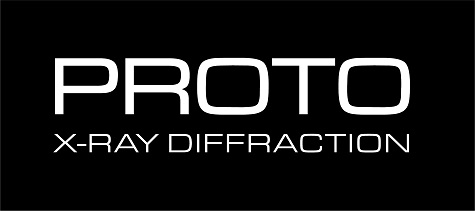Sponsored by ProtoJun 19 2020

Non-ambient diffraction is a powerful tool for identifying the effects of temperature, humidity, pressure, or atmosphere on a sample. Materials exposed to non-ambient environments tend to have different chemical and physical properties than they would in ambient conditions, so non-ambient experimental data can reveal important information about the changes these materials undergo. For example, a metallurgist might use variable-temperature x-ray diffraction (XRD) to measure the thermal expansion coefficient of metal as temperature conditions change.
A pharmaceutical researcher might want to expose medications to a range of temperature and humidity conditions to identify the conditions under which they break down and become ineffective; this testing would help companies make recommendations for proper storage of medication. Because of its ability to closely mimic a variety of real-world conditions, non-ambient diffraction is crucial for the investigation of many different materials, including ceramics, building materials, zeolites, minerals, polymers, and food.
In order to perform non-ambient experiments, diffractometers must be configured with variable-temperature and pressure stages. By equipping a diffractometer with these stages, advanced experiments (e.g., low-vacuum, high-vacuum, and gas) are all possible; however, because they tend to be large, non-ambient chambers can typically only fit inside large diffractometers. While stages like Anton Paar’s BTS models (150 or 500 °C) are made to fit into benchtop systems, their more powerful temperature stages (up to 2300 °C) require more space inside a diffractometer. For those who want to perform experiments at higher temperatures without having to purchase a large, costly system, Proto has developed an intermediate solution to bridge the gap.
The Proto AXRD Theta-Theta is an affordable platform for non-ambient x-ray diffraction (XRD) experiments in a compact system. With minimal facility requirements, integrated chilling, and numerous options for optics, environmental cells, and detectors, the AXRD Theta-Theta can be configured to suit a wide range of applications. The 1200-Watt AXRD Theta-Theta measures just 100 cm wide, 61 cm deep, and 171 cm tall, allowing you to bring non-ambient powder diffraction to your lab in a compact, cost-effective unit.
If lengthy temperature experiments often cause your primary diffractometer to be unavailable for routine powder analysis, the AXRD Theta-Theta offers a convenient solution. While you run routine experiments on your main diffractometer, you can set up non-ambient experiments on your own dedicated unit without the need for extensive space requirements.
The AXRD Theta-Theta can be equipped with many of the standard optics that are found in full-sized units, such as an auto-divergence slit, an auto-adjust knife-edge, and a basic glancing incidence diffraction (GID) package consisting of a parallel beam optic with an elongated Soller slit. The Theta-Theta really shines in its capabilities as a non-ambient experimental platform; it can also be configured with a large selection of environmental chambers for more advanced XRD experiments. Proto is proud to offer a wide range of temperature stages from Anton Paar:
Table 1.
| Temperature Stage |
Photograph |
Temperature Range/Limit |
| BTS 150/500 |
 |
up to 150/500 °C (respectively) |
| TTK 600 |
 |
-190° to 600 °C |
| XRK 900 |
 |
up to 900 °C |
| HTK 1200N |
 |
up to 1200 °C |
| HTK 16N |
 |
up to 1600 °C |
| HTK 2000N |
 |
up to 2300 °C |
Along with the Anton Paar stages listed above, the AXRD Theta-Theta is compatible with many Oxford temperature stages. If you are interested in a particular temperature stage, feel free to ask Proto about integration into the Theta-Theta system.
For users who want the advanced capabilities of a large laboratory system in a smaller footprint and price point, the AXRD Theta-Theta will allow you to optimize your powder diffraction experiments. For more information about options and customization, contact a member of the Proto sales team.

This information has been sourced, reviewed and adapted from materials provided by Proto.
For more information on this source, please visit Proto.